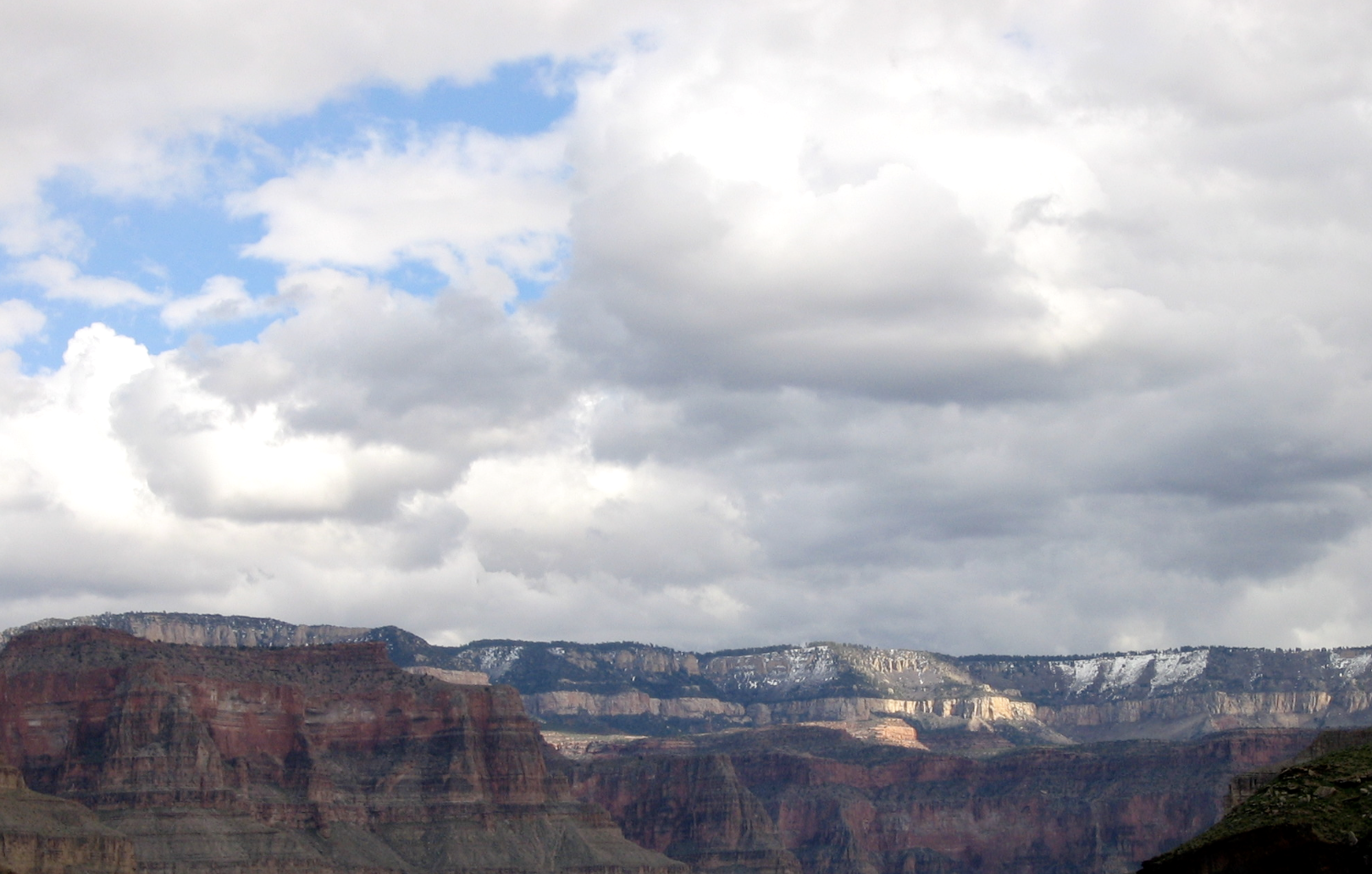
“See this down-canyon wind? Baaad sign. Dress warm tomorrow and do not come crying to me when you don’t put your rainfly on tonight.” This is what our head guide, Scotty, told us at dusk before we woke up sleeping in a puddle the next morning. While in the Canyon from March 19th through the 28th of 2005, the weather seemed completely erratic. We had temperatures ranging from 80 F with unadulterated sunshine (“Bi-kini” weather according to Scotty) to about 40 F at night. We had fluffy, unthreatening cumulus as well as foreboding thunderheads that pelted us with sleet for thirty minutes. According to Scotty, however, the weather was not as unpredictable as it seemed. That is, if you can read the weather signs the way our guides read the water. Air and water are both fluids and behave in surprisingly similar ways.
Weather and water both respond to pressure gradients. Rivers speed up as they constrict (high pressure) and slow down as they widen (low pressure). Water in rivers always moves from areas of high pressure to low pressure. When a fast constricted portion widens, at the end of a rapid for instance, the water spreads unevenly, flowing backwards at the edges. This creates eddies, which are turbulent and chaotic pockets of water at the low-pressure end of a pressure gradient. Winds and storms behave similarly. Low pressure anomalies are associated with stormy, turbulent conditions. Winds will blow from high to low pressure areas, so an east wind means a low pressure center to the west, possibly with an associated storm.
Scotty entertained my request for a weather interview while floating down the Colorado on a pleasant but breezy day. The wind blew “up-canyon”, meaning generally from the west. Scotty told me that this is normal and not usually threatening—winds in the Southwest generally blow up from the gulf and are therefore normally southwesterly. These southwest winds get “caught” in the canyon and become west winds because the Canyon often runs directly East-West.
The “down-canyon” wind prediction panned out every time. Scotty explained that the down-canyon wind signifies low pressure to the south, which usually means a storm associated with a low-pressure anomaly. Because most storm systems in the area move from southwest to northeast this means a storm to the south will move over us soon—Scotty predicts within 10-60 minutes of a strong down-canyon wind you will get rain. This was certainly the case 30 minutes after his warning and 10 minutes after setting up our rainfly. Another nighttime sign is a moon with a “halo” around it. This indicates that the air is already laden with moisture. This happened on our last night—the next day was not rainy but dank and cloud-covered all day.
Sporadic winds mean sporadic storminess. Scotty interprets this as being on the “edge” of a storm system. Since storms slowly rotate and usually have outside bands that feed into a central disk, these bands may sporadically sweep across our location and give us intervals of wind, rain and sun on the order of minutes or hours. This happened to us on at least one day—we had the aforementioned 30 minutes of sleet, interspersed with 30-60 minutes intervals of sunshine, wind, and rain all day.
The day of sleet was the day we visited Havasu Creek, and Scotty rightly warned us to run, not walk back to the boats if it started raining heavily. Small slot canyons like Havasu can easily flash flood if there is enough rain in the canyon and its basin. Scotty’s most intriguing warning, though, was that if we smelled something “organic” we must abandon thoughts of making it back to our boats and just climb as high as possible, because flashing is minutes away. He explained to me that the organic smell comes from decayed material in the stream bottom that has been stirred up by the flood and is coursing at the head of the flow, probably less than a quarter mile from your first whiff.
Finally, Scotty gave me a river guide’s feel for what each month means in terms of weather. March is, of course, March—predictable in its unpredictability. April and May are more predictably sunny and pleasant. June through August have the highest temperatures, with highs regularly topping 100 F. The end of July through August is also monsoon season—warm and rainy. September and October are dry and warm but not too hot. December and January are the only months where temperatures approach freezing in the Canyon—lows average between 35 and 37 (Conmara Pub. 2002).
What we would all like to know, of course, is how to predict beautiful BI-kini weather. Scotty’s answer: “you just feel it in ya bones.”
WORKS CITED
Conmara Publishing. 2002. Grand Canyon weather patterns. Date accessed: 2 April 2005. http://www.grandcanyonhiker.com/planners/weather/index.shtml
